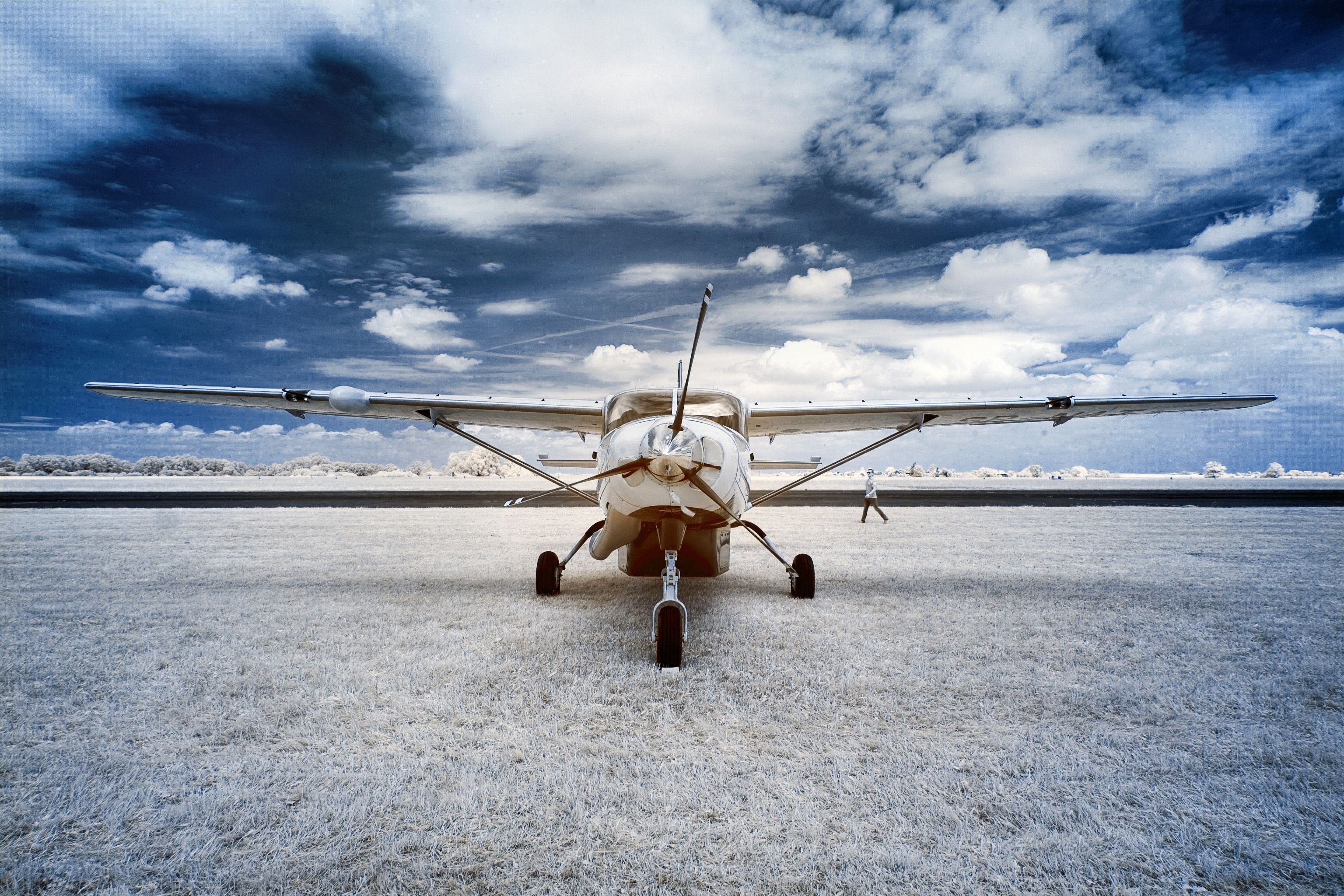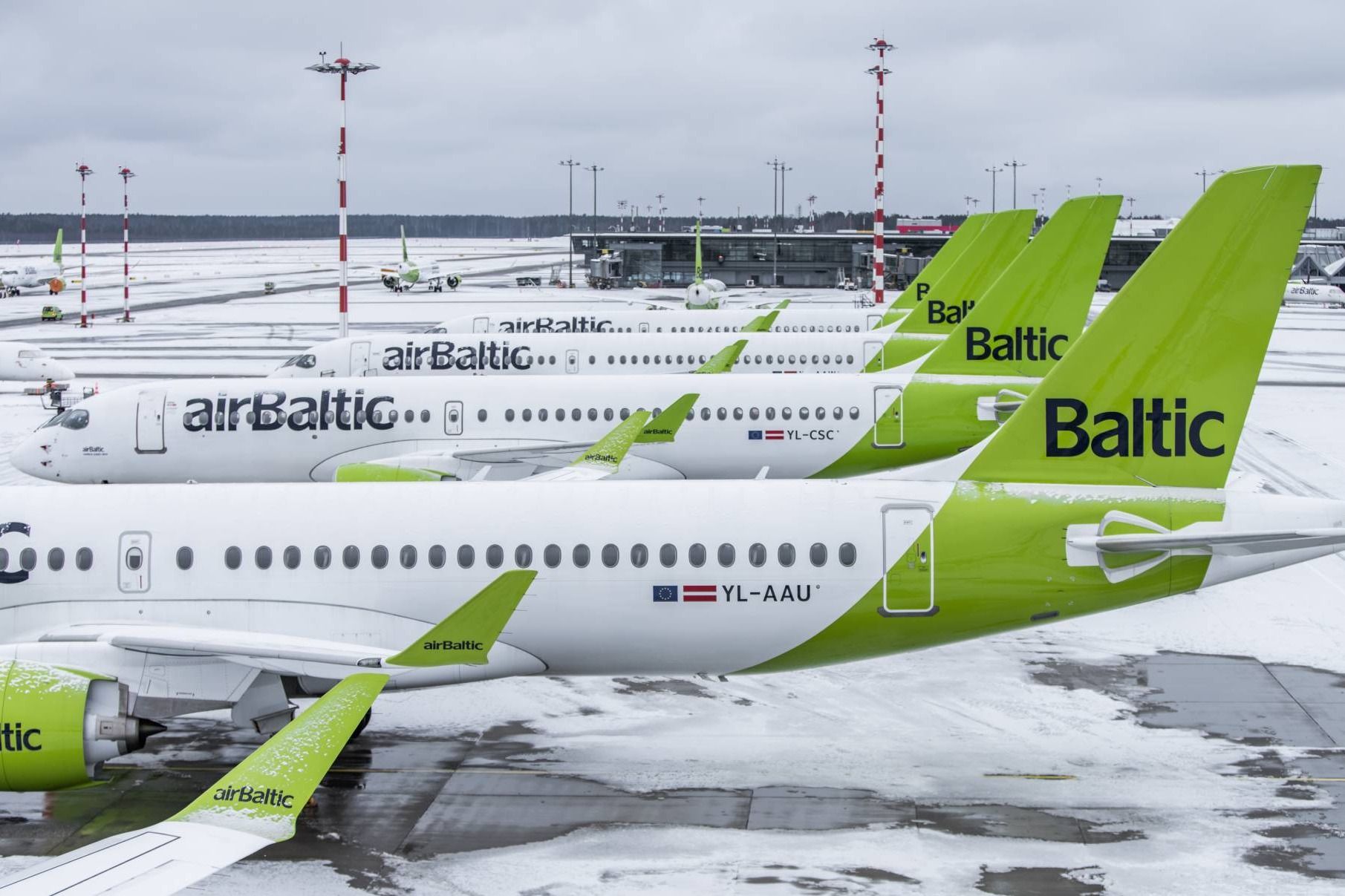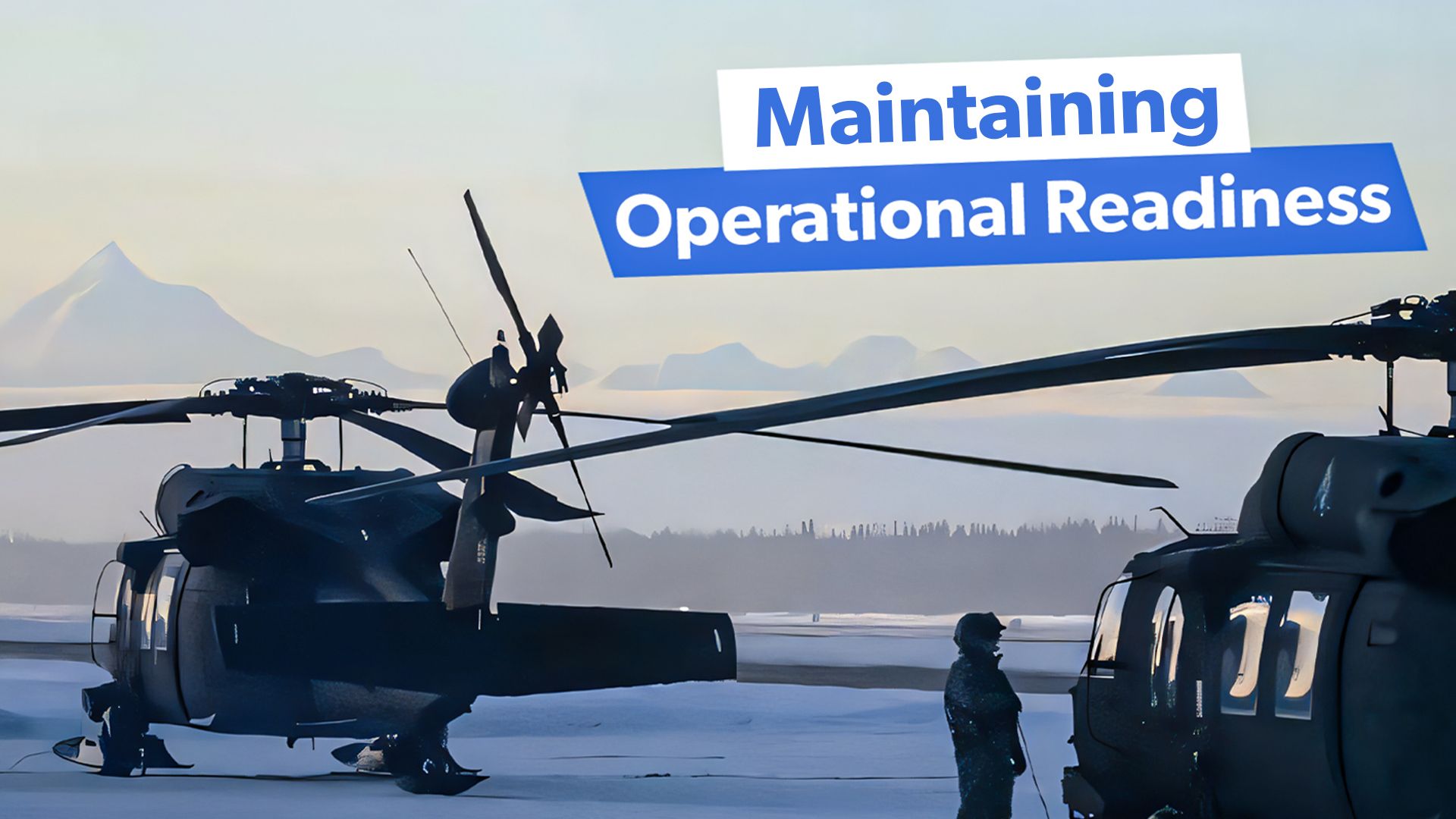Summary
- Air Start Units & De-Icing Vehicles are essential for aircraft maintenance in extreme cold.
- Preheating of engines is crucial in cold weather; methods include electric heaters & forced air heaters.
- Proper attire, working in shifts, and hangar use are vital for personnel maintaining aircraft in cold climates.
As I’ve mentioned in several previous articles as well as my Simple Flying author bio page, the
B-52 Stratofortress
(AKA the “BUFF”) is my all-time favorite warplane, so it was a joy to be able to watch the BUFFs take off and fly when I was a young enlisted airman at Minot AFB, North Dakota. Thing is, for those of you not familiar with that geographical region of the United States, North Dakota and the surrounding so-called “Northern Tier” states get really, really freakin’ cold during the winter months. “Why not Minot? Freezin’s the reason,” goes the cynical joke.
How cold, you ask? I recall experiencing -40°F (which by crazy coincidental quirk also equates to -40°C) wind chill factor on at least a couple of occasions.
Yet those B-52 kept flying even in those miserable conditions. This begs the question of how military aircraft in general manage to maintain operational readiness even in the face of extreme climates and inclement weather. Simple Flying now attempts to answer that question.

Related
How Are Aircraft Engines Preheated & Kept Warm In Cold Weather?
When the temperature drops below freezing, you need to preheat piston aircraft engines.
Basic equipment and procedures
Two key items for aircraft maintenance in extreme cold weather are listed in a July 2023 article on aircraft ground support equipment published on the GovernmentProcurement.Com (operated by Greenwood Aerospace):
- Air Start Units: As can probably be guessed from the wording, they’re used to start up the aircraft’s engines. They generate and supply the high-pressure air needed to rotate the turbines, which is an especially critical process during cold weather conditions.
- De-Icing Vehicles: Again, easy enough to guess the purpose from the wording. Used to remove ice and snow from aircraft, a crucial task for maintaining flight safety in cold climates
Preheating an engine is a procedure applicable to military and civilian aircraft alike. Two methods for preheating engines (at least one piston-engined aircraft anyway) are listed by Simple Flying’s Mark Finlay in the article I linked to at the beginning of this article:
- Installed Electric Engine Heaters: These confer the advantage of uniformly warming up all the engine components to the same temperature rather than one part at a time; they are attached to electrical heating elements to the oil pan, crankcase, and cylinders.
- Forced Air Heaters (Forced Air Carts): Powered by propane, diesel, or gasoline, forced air heaters produce heat quickly and can also be used to heat the cabin; the downside is that, unlike installed electric engine heaters, forced air heaters don’t heat the engine evenly and uniformly, leading to increased wear and tear on startup.
As for aircraft maintenance personnel tasked with cold weather duties, of course, common sense dictates the wear of proper clothing and protective equipment, as well as use of the buddy system and working in shifts to minimize the effects of exposure to cold; this dictates proper workforce planning to ensure that a sufficient amount of personnel is available for each shift, as maintenance tasks performed during temperatures below -20°F could take as much as five times as long to complete as they do under more pleasant climates.
As for the warbirds and their human maintainers alike, common sense dictates that the work be performed inside a hangar or hardened aircraft shelter (HAS) as opposed to outdoors whenever feasible.

Related
How Does Cold Weather Affect Aircraft Engines?
Aircraft engines perform better in cold weather.
Some US Air Force perspectives (fixed-wing assets)
Getting back to the B-52, what are some of the steps taken by the BUFF’s maintainers to keep the old warhorse ready to rock ‘n’ roll in severe cold?
A March 2017 article in Military Machine makes reference to the 5th Aircraft Maintenance Squadron (5 AMXS), a “mixture of heated fluid and hot water” being sprayed on the venerable bombers for de-icing purposes. Meanwhile, this YouTube video produced by Team Minot, wherein 5th Bomb Wing crew chief Senior Airman (SrA) James Booterbaugh is interviewed, specifies that the de-icing trucks — which are able to operate at wind chill temps as low as -60°F(!!) — use a mixture of hot air and glycol:
Meanwhile, they use heaters inside the cockpits to help melt the frost and snow of the forward end of the fuselage.
Amother tool that comes in handy for BUFF maintenance during cold weather (and in general) in the Engine Pod Maintenance Stand (recently improved by USAF Technical Sergeant [TSgt] Jermey Vickers), which allows for easier access to the warbird’s engines and wings even when Mother Nature is unleashing the fury of the elements.
Another fairly recent advancement for B-52 cold weather performance has been the Fischer-Tropsch synthetic fuel blend. More specifically, we’re talking about a 50-50 blend of traditional crude oil-based fuel and a Fischer-Tropsch fuel derived from natural gas,which was first field-testing in Minot’s wintry conditions back in January 2007 (as covered by AF News). That following August, then Secretary of the Air Force (SECAF) Michael W. Wynne announced the completion of the certification process for this fuel blend. According to an August 2020 article by the Air Force Test Center (AFTC):
“The Fischer–Tropsch process is a collection of chemical reactions that converts a mixture of carbon monoxide and hydrogen into liquid hydrocarbons. These reactions occur in the presence of metal catalysts, typically at temperatures of 302–572 degrees Farenheit and pressures of one to several tens of atmospheres. The process was first developed by Franz Fischer and Hans Tropsch at the Kaiser-Wilhelm-Institut für Kohlenforschung in Mülheim an der Ruhr, Germany, in 1925.”
Some US Army perspectives (rotary-wing assets)
Yes, the US Army is a backpacking, ground-pounding branch of service first and foremost, but even though the US Air Force broke away from the Army as a separate and independent branch of service on September 18, 1947, US Army Aviation is still very much a going thing, specifically rotary-wing assets such as the Sikorskiy UH-60 Blackhawk utility chopper and the Boeing AH-64 Apache helicopter gunship.
Accordingly, the Army has stayed up-to-speed on warbird maintenance in extreme climates. Chapter 10 of their technical manual TM 1-1500-204-23-1 (Jul 92, w/Ch 11, Dec 18), General Aircraft Maintenance, specifically addresses Arctic, Desert, and Tropic Maintenance. Time and spatial considerations prevent me from resharing all of that document’s useful tips, but for the time being, some of the tips on preheating engines are particularly insightful:
- Engine preheat is normally required only on reciprocating engines. Jet engines don’t require preheating unless the available auxiliary power unit is insufficient to overcome additional starter loads.
- Generally speaking, preheating won’t be required as long as the temperature is above 0°F (-180°C) and engine oil has been properly diluted.
- Apply heat to both the power and accessory sections until cylinder heat temperature reaches 68°F (20°C)
For those of you dear readers who have neither the time nor desire to sift through 12 pages of dry technical jargon, here is some short & sweet info from a November 2020 Fact Sheet published in PS Magazine (“The U.S. Army’s Preventive Maintenance Magazine”): titled “Flightfax 5”:
“Helicopter operations, particularly with their inherent vibrations, in temperatures below -35 degree Fahrenheit results in a marked increase in metal fatigue. All metals become increasingly brittle as the temperature decreases. Aircraft fatigue is evidenced by an increased number of skin cracks and popped rivets in stress areas. Careful attention must be devoted to these areas in all stages of maintenance operations. Careful attention must be devoted to these areas in all stages of maintenance operations. Areas to inspect on a more frequent basis for stress cracks, as a direct result of the environment include but are not limited to the following: engine decks, tail-boom hard points, and gearbox mounting points. ”
“Operation of aircraft at temperatures below -50 degrees Fahrenheit should not be attempted except in emergencies; unless the aircraft has the appropriate winterization kit and auxiliary systems that have proven reliable at lower temperatures. Lubrication products must be examined to determine if they are sufficient for operations in extreme cold environments.”

